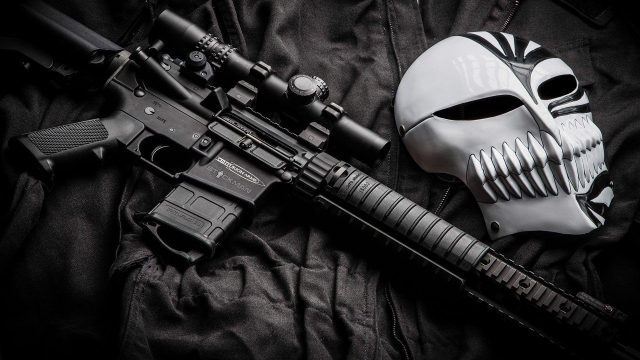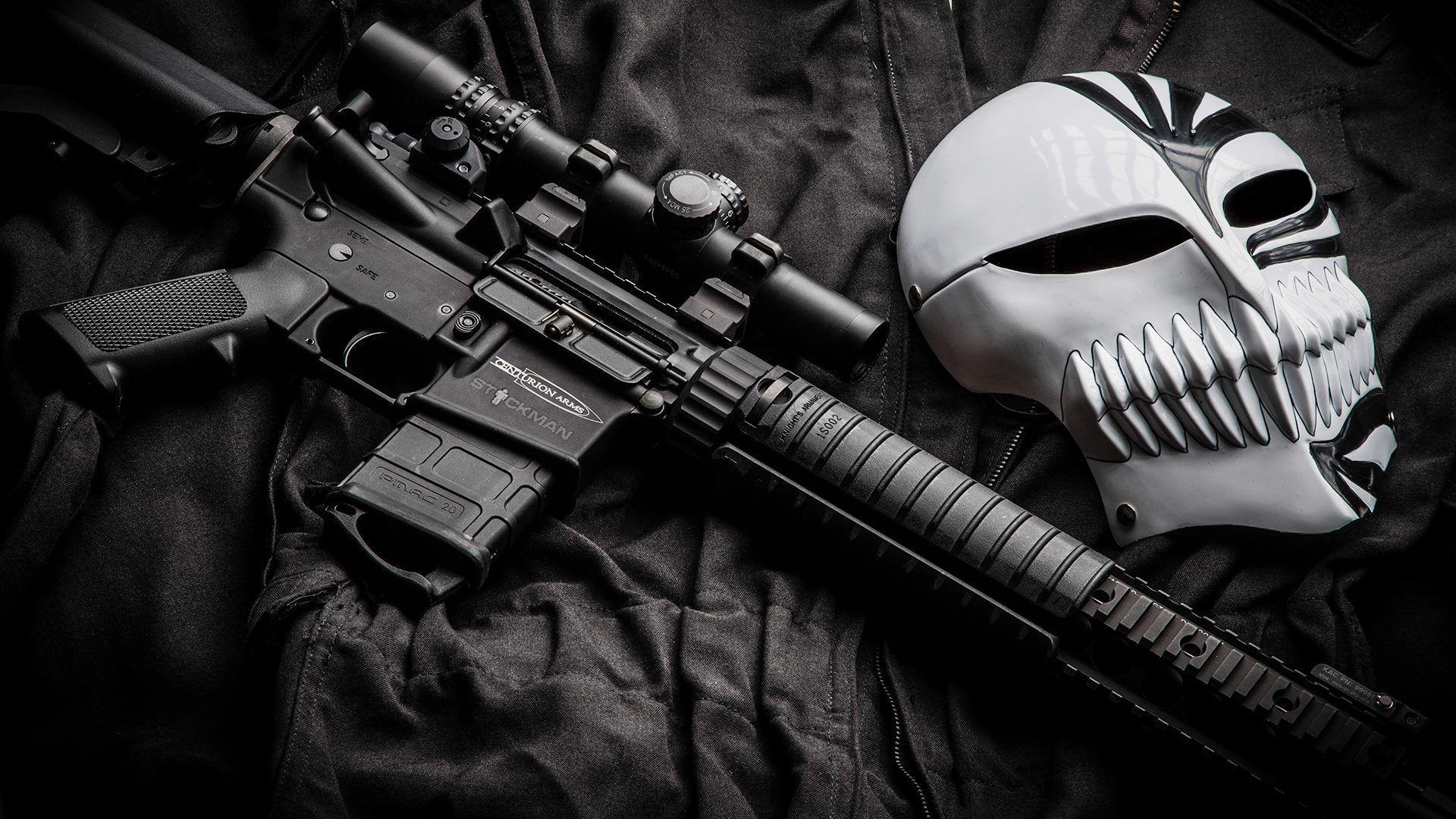Firing Up the Debate: Exploring Firearms in the Modern World
Joe Howard -
Firearms, a topic that has long sparked controversy and ignited passionate discussions. Whether it be for personal protection, sporting purposes, or military applications, the significance of firearms cannot be understated. They have evolved alongside human civilization, shaping history in both positive and negative ways. With their ability to project force and the immense responsibility that comes with owning and using them, firearms have become a symbol of power, security, and sometimes tragedy.
At the heart of any firearm lies its ammunition, the fuel that propels it into action. Ammunition comes in various calibers, shapes, and configurations, each designed for a specific purpose. From the smallest handgun rounds to the powerful cartridges used in rifles, ammunition plays a critical role in the overall effectiveness and performance of firearms. It is through the careful selection and understanding of ammunition that we can fully appreciate the capabilities and limitations of these powerful tools.
In this article, we delve deep into the multifaceted world of firearms, exploring their history, technological advancements, and the role they play in our modern society. We aim to navigate the intricate web of arguments and debates surrounding firearms, shedding light on the complex factors that shape public opinion and influence legislation. Join us as we unravel the intricacies of firearms, understanding them not only as tools of destruction but also as instruments that have shaped the course of human civilization throughout the ages.
History of Firearms
In the earliest days of human civilization, the concept of using projectiles for defense and hunting was born. However, it wasn’t until the discovery of gunpowder, centuries later, that firearms as we know them today emerged on the scene.
The history of firearms can be traced back to their humble beginnings in 9th-century China, where gunpowder was initially used in firecrackers. The Chinese soon realized the potential of this explosive substance, and it wasn’t long before they began experimenting with ways to harness its power in weapons.
By the 13th century, the concept of a handheld firearm was introduced with the invention of the first true gun, known as the "fire lance." This early firearm consisted of a tube filled with gunpowder and projectiles that were ignited by a lit fuse. It provided a significant advance in warfare, revolutionizing the way battles were fought.
During the following centuries, firearms continued to evolve and become more sophisticated. The development of the matchlock mechanism in the 15th century allowed for more efficient ignition of gunpowder, making firearms easier to use and more reliable. This led to the widespread adoption of firearms by armies around the world.
The 19th century witnessed a series of groundbreaking innovations in firearms technology. The introduction of the percussion cap and the subsequent development of the breech-loading mechanism greatly improved the speed and accuracy of firearms. These advancements, coupled with the industrial revolution, led to the mass production of firearms on a scale never seen before.
As firearms continued to evolve, they became an integral part of military strategies, shaping the outcome of many historical conflicts. Civilian use of firearms also increased, with individuals relying on them for self-defense, hunting, and sport.
Today, firearms have become a highly debated topic, with discussions revolving around their regulation, safety, and impact on society. As we continue to navigate the complexities of our modern world, understanding the history of firearms provides us with valuable insights into the evolution of technology and its enduring influence on the way we live and protect ourselves.
Types of Ammunition
Ammunition plays a crucial role in the operation of firearms, as it provides the necessary power to propel projectiles towards their intended targets. In this section, we will explore different types of ammunition commonly used in the modern world.
-
Rifle Ammunition: Rifle ammunition is designed for use in long-barreled firearms, known as rifles. It typically consists of a metal case containing a primer, propellant, and a bullet. Rifle ammunition comes in various calibers, which indicate the diameter of the bullet and the corresponding barrel size. Examples include the .223 Remington, .308 Winchester, and the renowned .30-06 Springfield.
-
Handgun Ammunition: Handgun ammunition is specifically manufactured for handguns, which are smaller firearms designed to be operated with one hand. Similar to rifle ammunition, handgun cartridges consist of a metal case housing a primer, propellant, and a bullet. There are different calibers available for handguns, such as the popular 9mm Luger, .45 ACP, and .357 Magnum.
-
Shotgun Ammunition: Shotgun ammunition differs from rifle and handgun ammunition because it utilizes a shell that contains either multiple small pellets (shot) or a single large projectile (slug). The shells are usually made of plastic or paper and are loaded into the chamber of the shotgun. Shotgun ammunition is commonly categorized by gauge rather than caliber, with 12 gauge and 20 gauge being the most prevalent.
Each type of ammunition has specific characteristics that make it suitable for different purposes. The choice of ammunition depends on factors such as the intended use, firearm type, and desired range and stopping power. It is crucial for firearm owners to familiarize themselves with the various types of ammunition available and select the appropriate one for their needs.
Impact of Firearms on Society
Firearms have had a significant impact on society, shaping various aspects of human existence. From their earliest inception, these powerful weapons have influenced the course of history, warfare, and personal safety.
First and foremost, firearms have revolutionized the nature of warfare. Prior to their invention, battles were fought with swords, spears, and primitive ranged weapons. With the introduction of firearms, warfare became more lethal and changed the dynamics of conflicts. Guns allowed armies to project force from a greater distance and with increased accuracy, altering the strategies and tactics employed on the battlefield.
Moreover, firearms have also played a role in personal safety and self-defense. Owning a firearm can provide individuals with a means to protect themselves and their loved ones in times of danger. However, the topic of gun ownership and its impact on safety is a controversial one, as it intertwines with issues related to crime, accidents, and mental health.
Additionally, the production and trade of ammunition for firearms have become significant economic activities. The demand for ammunition has created industries dedicated to its manufacture, generating employment opportunities and contributing to the overall economy. However, the widespread availability of ammunition also raises concerns regarding illegal trafficking and the potential for misuse of firearms.
In conclusion, firearms have had a profound influence on society, impacting warfare, personal safety, and economic sectors. Their introduction into the modern world has not only shaped historical events but also sparked ongoing debates and discussions surrounding gun control, violence, and individual rights. Understanding the multifaceted impact of firearms is crucial in comprehending their role in our society today.

Archives
- December 2025
- November 2025
- October 2025
- September 2025
- August 2025
- July 2025
- June 2025
- May 2025
- April 2025
- March 2025
- February 2025
- January 2025
- December 2024
- March 2024
- February 2024
- January 2024
- December 2023
- November 2023
- October 2023
- September 2023
- August 2023
- July 2023
- June 2023
- May 2023
- April 2023
- March 2023
- February 2023
- January 2023
- December 2022
- November 2022
- October 2022
- September 2022
- August 2022
- July 2022
- June 2022
- May 2022
- April 2022
- March 2022
- February 2022
- January 2022
Calendar
| M | T | W | T | F | S | S |
|---|---|---|---|---|---|---|
| 1 | 2 | 3 | 4 | 5 | 6 | 7 |
| 8 | 9 | 10 | 11 | 12 | 13 | 14 |
| 15 | 16 | 17 | 18 | 19 | 20 | 21 |
| 22 | 23 | 24 | 25 | 26 | 27 | 28 |
| 29 | 30 | 31 | ||||